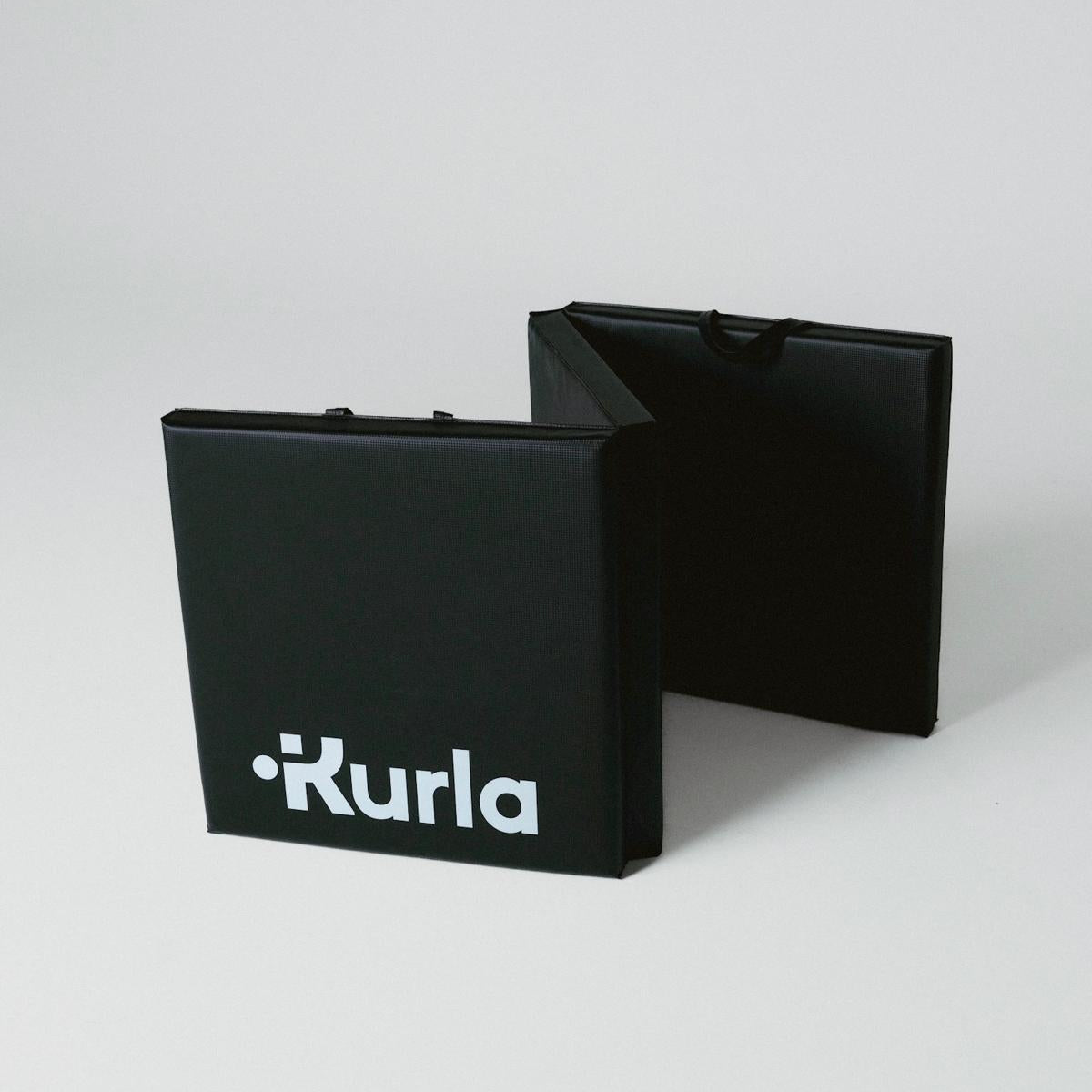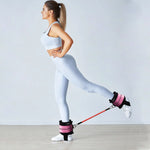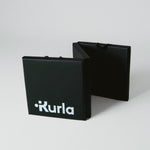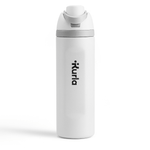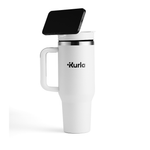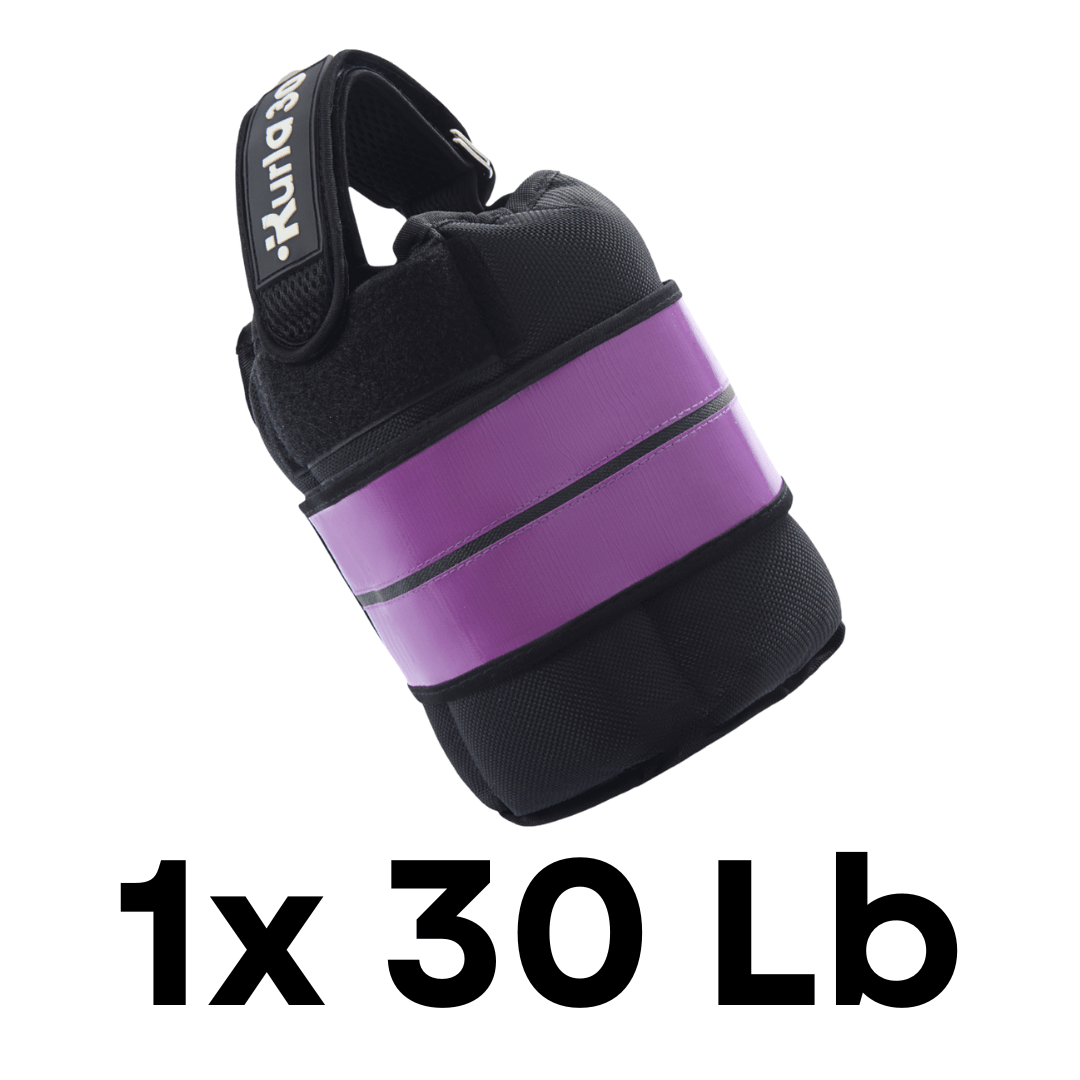
What KURLA Weight Should I Start With?
Share
Short Answer: Most beginners do best starting with 4 lb per side. It delivers enough resistance to feel your muscles working while keeping your form clean and your joints happy. As your strength and control improve, you can move up in small steps.
How to choose your starting weight
Picking the right starting weight depends on your experience level, training goal, and the body part you are targeting. Use these guidelines to make a confident choice.
1) Absolute beginners, Pilates, mobility, pre or postnatal: Start with 4–8 lb. The focus is on learning movement patterns, feeling muscles activate, and keeping perfect alignment.
2) Already training glutes and legs: Many people are comfortable with 10–20 lb for lower body moves like kickbacks, donkey kicks, and step ups. If in doubt, begin lighter and progress quickly once technique is solid.
3) Upper body add-ons: Wrists and shoulders prefer lighter loads. Keep it to 4–8 lb when adding resistance to arm raises, punches, or core moves that involve the shoulders.
4) Advanced athletes: If you have strong single-leg control and years of training, 25–40 lb may be appropriate for targeted lower body work. Increase gradually and listen to your joints.
Rule of thumb: the last 2 reps of a set should feel challenging but remain smooth and controlled. If you need momentum or your posture collapses, the weight is too heavy.
Quick selector: goal × level
1) Toning and endurance (beginner): 4 lb
2) Glute sculpt and core (intermediate): 8–12 lb
3) Strength and power focus (advanced lower body): 15–25 lb+
4) Upper body finisher: 4–6 lb
Walking and low-impact cardio
Light loads are best for walking because the repetitive impact accumulates. Since KURLA starts at 4 lb per side, keep your first walk sessions short, 10–20 minutes, focus on posture, and use even strides. If you feel tugging at the knees or hips, switch the weights to a strength session instead of wearing them for longer cardio. Save heavier KURLAs for controlled movements that reduce joint stress and let you concentrate on form.
Technique first, weight second
Clean technique multiplies your results. When you strap on your KURLAs, check these fundamentals:
1) Alignment: Neutral spine, ribs stacked over hips, core braced lightly.
2) Range of motion: Move through a range you can control without swinging.
3) Tempo: Two counts up, two counts down is a solid baseline. Slower reps build more time under tension.
4) Breathing: Exhale during effort, inhale to reset.
5) Placement: Secure the dual straps snugly. The heel strap on the ankle model helps prevent slipping during dynamic moves.
If a rep feels shaky at the end of a set, pause and reset rather than pushing through with poor form. Quality reps beat quantity every time.
Sample starter routines by weight
Below are simple, effective ways to use your starting KURLA without overthinking programming.
4 lb routine: foundations and activation
1) Standing glute kickbacks 3×12 each side
2) Side-lying leg lifts 3×12 each side
3) Dead bug or marching tabletop 3×10
4) Standing calf raises 3×15
Finish with gentle mobility for hips and ankles.
8–12 lb routine: lower body sculpt
1) Step ups 3×10 each leg
2) Donkey kicks 3×12 each side
3) Curtsy lunges 3×10 each side
4) Side plank hip lifts 3×8 each side
Keep the core braced and avoid arching the lower back.
Upper body add-on with 4–6 lb
1) Lateral raises 3×10
2) Front raises 3×10
3) Standing punches 3×20 total
4) Pallof press holds 3×20 seconds
Stop each set one clean rep before form breaks.
When to move up
Progress slowly and intentionally. Use this simple progression model:
-
Master the reps: When you can complete all sets with perfect form for two sessions in a row, add 2–4 reps per set next time.
-
Add a set: If higher reps still feel controlled, add one more set per exercise.
-
Increase weight: Move to the next KURLA size only after reps and sets feel solid with excellent form.
This approach protects your joints, builds real strength, and reduces plateaus. If you move up and notice joint discomfort or technique slipping, return to the previous size and build volume before attempting the jump again.
Common mistakes to avoid
1) Going too heavy too soon: Heavier is not always better. If momentum carries your leg, the target muscles are not doing the work.
2) Rushed reps: Fast, swingy reps shift the load to joints and connective tissue. Slow down.
3) Neglecting warm-up: Spend 3–5 minutes mobilizing hips, ankles, and core to unlock smoother movement.
4) Wearing heavy weights for high-impact cardio: Save heavier KURLAs for controlled strength work.
Build a simple weekly plan
Here is a beginner-friendly schedule you can follow with a 4–8 lb start:
Day 1: Lower body sculpt (20 minutes)
Day 2: Core and upper body add-on (15 minutes)
Day 3: Walk with 4 lb KURLAs (10–20 minutes) or low-impact cardio
Day 4: Rest or mobility
Day 5: Lower body sculpt (repeat Day 1, try an extra set)
Day 6: Pilates flow or core activation
Day 7: Rest
Stick with the same weight for two weeks, then reassess. If your last sets feel easy and crisp, move up.
Recommended KURLA gear and learning resources
1) Explore the product: KURLA Glute Ankle Weights
2) Combine resistance: KURLA Resistance Bands
3) Get structured progressions: 18-Page KURLA Training Guide
4) Deep dive on benefits and safety: Do Ankle and Wrist Weights Work?
